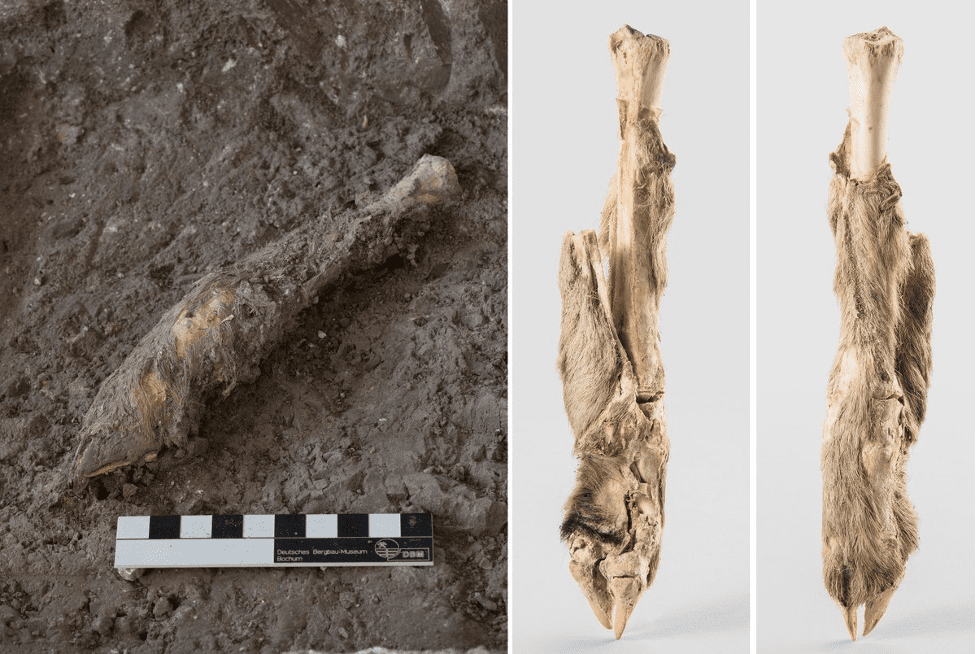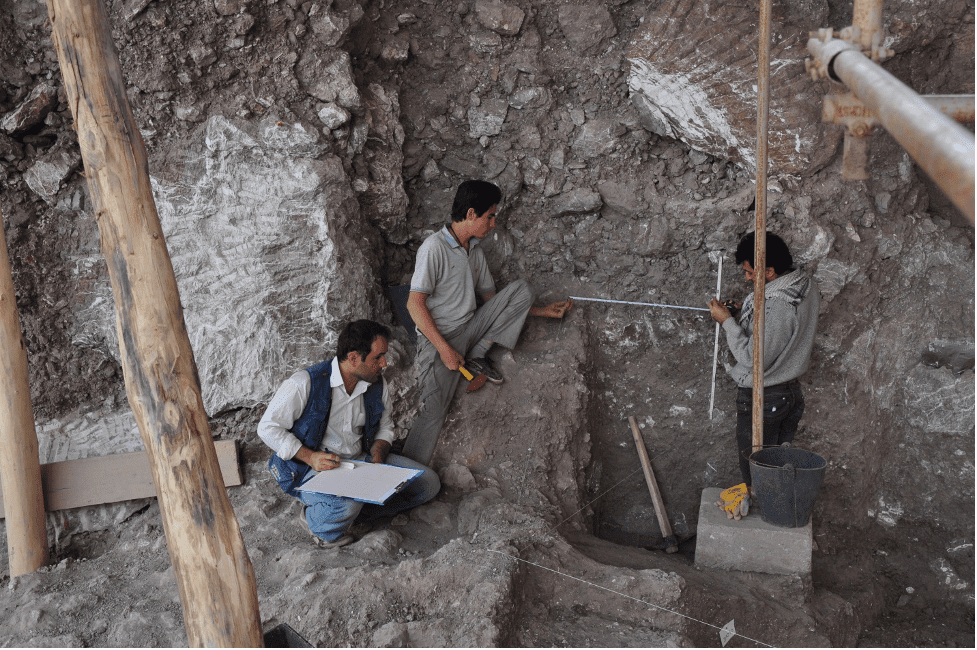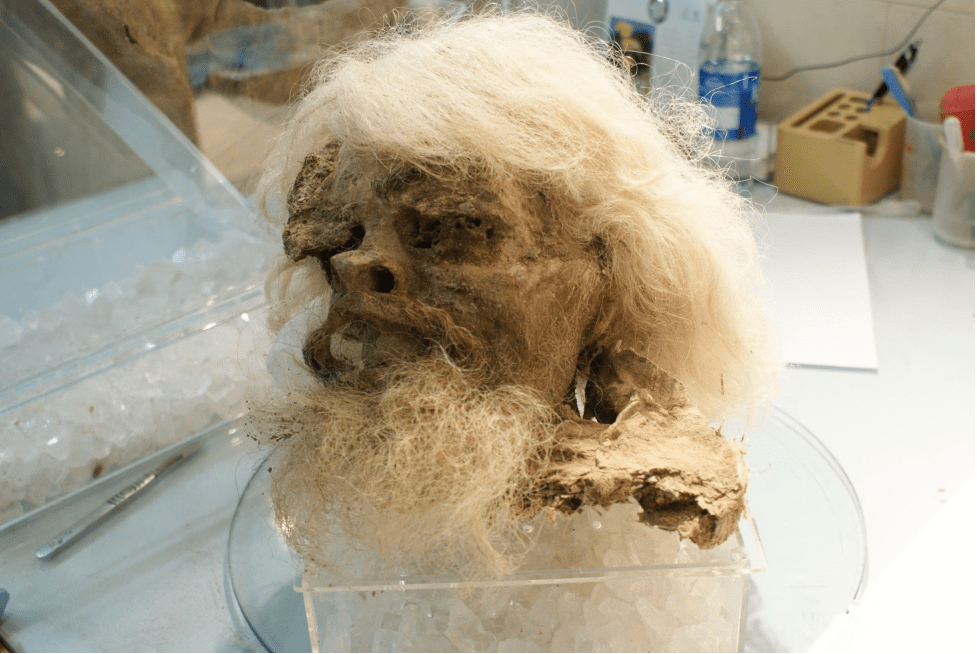It’s not every day that you find yourself a perfectly preserved sheep leg while mining but, as surprising as it may sound, this is exactly what happened to some salt mine workers in Iran.
On top of that, this sheep leg is not just any sheep leg – it assumedly belonged to miners dating back to the 5th or 6th century. Researchers recently extracted DNA from the limb of leg to gain a better insight into ancient sheep husbandry practices. The complete research is published in the journal Biology Letters.

Eurekalert | The mummified sheep leg when found and after cleaning
But, how did the sheep leg stay mummified?
When anyone thinks about mummification, they all go back to the Egyptian civilization that had a proper set of instructions and items used to mummify bodies, but this sheep leg did not get the same protocol as the Egyptian elites. It was the mine that did the mummification. The saline environment preserved the limb on its own. Salt can dehydrate objects, resulting in near-perfect preservation.

Saltmen of Iran | If the limb was in a coal mine, it probably would’ve decomposed entirely
Is this the first discovery?
Surprisingly, no. The Chehrabad salt mine has been home to many extraordinary discoveries such as the ‘saltmen’. During the late 90s and early 2000s, eight remains of well-preserved humans were found. They were named ‘saltmen’ but one of the bodies included a woman as well. These bodies were said to be 1300 to 2500 years old. Just like the sheep leg, they were also mummified thanks to the salt.

Saltmen of Iran | The preserved head of a ‘salt man’
What did the DNA indicate?
Senior Author Kevin Daly, a research fellow at Smurfit Institute of Genetics at Trinity College Dublin talked about DNA. He stated that the DNA extracted from the skin sample was extraordinarily well-preserved, even though it is more than a thousand years old. In a usual case, DNA decomposes quickly since the enzymes in the cells damage DNA strands with the help of water in the body but because of salt’s dehydrating properties, this chemical reaction did not take place, leaving the DNA strands just the way they were.
The DNA showed that the sheep common in southwest Asia are direct decedents of this ancient sheep. Researchers were astounded by the preservation that took place in the salt mine, forever granting it a special spot in the eyes of archeologists.




